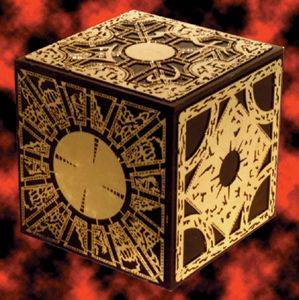Links in this article have expired and have been removed.

This post will be the first in a series concentrating on puzzles in games, with special focus on horror games. To start this up I would like to discuss why puzzles are needed at all. Is it really necessary to have puzzles in game when it might detract from story, immersion, etc?
In order to be a game, there needs to be some kind of interaction. I think this is pretty much the most basic feature of a game – no interaction, no game. In order to be engaging there also needs to be some kind of challenge, if the player simple makes arbitrary choices then the game is awfully close to interactive storytelling (not be mixed up with IF) instead. Even in the most linear story games, there is always something blocking progression, something that needs to be taken care of before the game advances. In Fahrenheit (aka Indigo Prophecy) the player presses random buttons and in the IF game Photopia the player needs to do the correct action. Both of these games are (in my option at least) are very close to being works of interactive storytelling, but still feel like games.
So can’t the interaction be just some form on exploration? If the player is free to look at anything in the world, is that not enough to make it a game? I think no. The reason for this is that this kind of interaction is very close to a footnotes in a book or hyperlinks in some online text. The reader can choose to read the extra pieces of information or simply keep on reading, thus allowing for very basic interaction. If this would make the work a “game”, then just a about any book or webpage could be considered just that. This does not seem right to me and is my main reason for thinking that some kind of challenge is needed.
So what kind of challenges can be used? Some games like Dragon’s Lair requires the player to press a random button at the right time . This mechanic is awfully simplistic but used at the right time it can be quite effective and at least one upcoming game even bases its entire basic gameplay around it. It can even be more simplistic than this and just require the roll of a die, like some gamebooks. Also notice how the gamebook goes from a branching plot novel (a non-game) to an actual game as soon as these “challanges” are added. This sort of gameplay might be highly trivial, with a clear sepperation of story and game mechanics, but I still think it is what makes a difference and creates what I would like to call a game.
Modern games have plenty of fun ways to present challanges – hordes of enemies, deadly chasms, puzzles, etc. It stills plays the same role as that timed button press though, the player needs to face some kind of obstacle and try to overcome it. This comes as a problem for horror games though, since it is a genre that has a lot of focus on creating atmosphere. Everytime an obstacle is reached, the pace is broken and it can lead to frustration in the player – breaking immersion.
With this in mind, it seems like some kind of hands-on-action is the best for horror games. However, looking at horror in other mediums, classics such as The Shining, Alien and The Exorcist contain very little action. As explained in an earlier post, having too much (player induced) violence will most likely significantly lessen the horror aspects of the game. That said, action do not have to be bad, but basing the gameplay on it will probably not create a scary game.
In search of other kinds of challanges, the three major found in horror are: sneaking, running and puzzles. Sneaking has been briefly metnioned earlier and running has had whole post dedicated to it. I think the problem is the same for both of these mechanics though: they are likely to add an element of trial-and-error. This means replaying which in turn means frustation and loss of atmosphere. This is something one wants to avoid in horror games and thus these two mechanics should be used sparesly.
Left is now puzzles and it is my belief that this is the best suiting horror gameplay mechanic. Infact, horror in other media use similar ways to add drama to the story. Often a horror story has some kind of mystery, a puzzle, at it’s core, making it similar to detective fiction. Events that onfold also often come in the form of puzzles, in Ringu the main characters try to learn the mystery of a cursed video tape and many characters in horror story has to find a way out of locked room, etc. Puzzles also offer a nice change of pace from an intense section, making the player calm down and get ready (more vunerable) for the next scary part. This is probably why action based horror games like Silent Hill and Resident Evil, come with many puzzle sections.
Puzzles come with a lot of problem though and can too lead to frustration and loss of immersion in a game. What kind of problems that might arise and ideas for solving these will featured in the upcoming posts.
Until then: What do you think is the most basic essence of a game? Are challenges really needed to create a game? Are puzzles the best basic mechanic for a scary game?